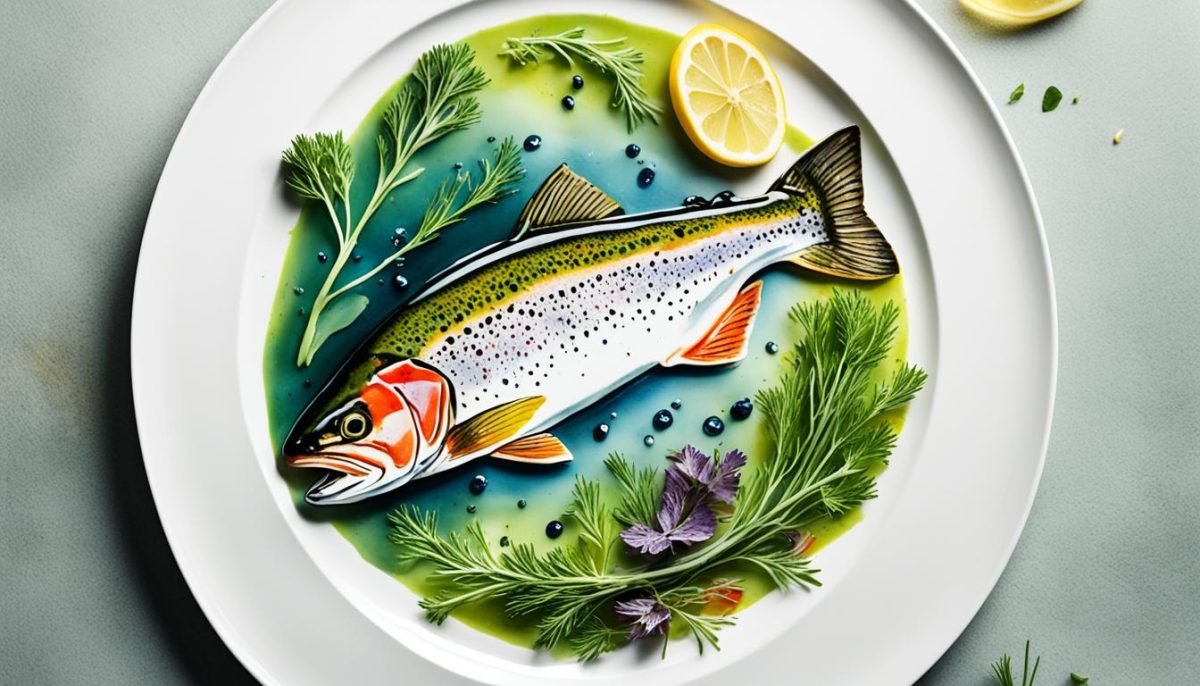Ever wondered what secrets lie beneath the iridescent scales of a trout? The question of “What does trout taste like?” might seem straightforward, but the answer, much like a winding river, has surprising depths. A simple answer isn’t enough; it’s a culinary odyssey best experienced and understood through multifaceted exploration. To truly grasp the nuances of trout’s flavor, one must consider species, habitat, diet, and, crucially, preparation methods.
The Terroir of Trout: Species and Habitat
The term terroir, typically associated with wine, applies equally well to trout. Just as a vineyard’s soil and climate impact a grape’s flavor, a trout’s environment profoundly shapes its taste profile. Rainbow trout, brook trout, brown trout – each species boasts a subtle, yet discernible, variance. Rainbow trout, the most ubiquitous, generally offers a milder, nuttier flavor, making it accessible to even the most discerning palates. Brook trout, often found in pristine, cold streams, presents a more pronounced earthiness, a delicate dance between freshwater musk and subtly sweet notes. Brown trout, known for their cunning and adaptability, tend to exhibit a richer, more robust flavor, often considered the most “gamey” of the freshwater trouts. The water itself plays a vital role. Cold, clear, fast-flowing rivers produce trout with firmer flesh and cleaner flavors. Conversely, trout raised in warmer, less oxygenated environments may develop a muddier, less desirable taste.
Dietary Influence: You Are What You Eat
Like any discerning epicure, trout reflect their diet. A trout feasting on aquatic insects and crustaceans will invariably taste different from one subsisting primarily on algae and detritus. A diet rich in invertebrates contributes to a cleaner, more refined flavor, often described as “sweet” or “delicate.” Conversely, a less selective diet can result in a less appealing, sometimes even “off-putting,” taste. This is why fly fishing, which often mimics the natural diet of trout, can be seen as a method for ensuring a more delectable catch. Hatcheries, with their controlled environments and formulated feeds, aim to produce consistently flavored trout, yet they often lack the complexity found in their wild counterparts.
The Art of the Catch: Freshness Matters
The adage “fresh is best” rings particularly true when it comes to trout. The moment a trout leaves the water, enzymatic processes begin to alter its flesh. For optimal flavor, trout should be consumed as soon as possible after catching or purchasing. Look for bright, clear eyes, firm flesh, and a fresh, sea-like aroma. Avoid trout with dull eyes, soft flesh, or a fishy, ammonia-like odor, as these are indicators of spoilage.
Preparation Perfection: Unlocking the Flavor Potential
The way trout is prepared dramatically impacts its ultimate taste. Simple preparations often showcase the fish’s inherent flavors best. Pan-frying with butter, herbs, and a squeeze of lemon allows the delicate sweetness of the trout to shine through. Grilling imparts a smoky char that complements the fish’s natural richness. Poaching in court-bouillon yields a supremely tender and subtly flavored dish. More elaborate preparations, such as stuffing with wild rice or encrusting with nuts, can add complexity and textural contrast, but risk overshadowing the trout’s delicate flavor. Overcooking is a common pitfall that renders trout dry and flavorless. The flesh should be just opaque and flake easily with a fork. Consider the subtle dance between heat and protein coagulation to avoid protein denaturing.
Beyond the Fillet: Exploring the Whole Trout
While fillets are the most common preparation, exploring the whole trout can offer a deeper appreciation for its flavor. Roasting a whole trout, stuffed with aromatics, preserves moisture and intensifies the flavor. The skin, when crisped to perfection, offers a delightful textural contrast. Even the bones can be used to make a flavorful stock, adding depth to soups and sauces.
Pairing Pleasures: Complementary Flavors
Understanding which flavors complement trout is crucial for creating a truly harmonious dining experience. The mild, nutty flavor of rainbow trout pairs well with delicate herbs like dill, parsley, and chives. Brown trout, with its richer flavor, can stand up to more robust flavors like thyme, rosemary, and even a hint of garlic. Lemon, butter, and white wine are classic accompaniments that enhance the trout’s natural sweetness. For a more adventurous pairing, consider earthy vegetables like mushrooms or asparagus, or a bright, acidic salad with citrus vinaigrette. The fat content of trout makes it a natural companion to crisp, dry white wines like Sauvignon Blanc or Pinot Grigio. A light-bodied red wine, such as Pinot Noir, can also work well, particularly with grilled or pan-fried trout.
The Verdict: A Symphony of Subtle Flavors
So, what does trout taste like? The answer, as explored, is multifaceted. It is an aquatic prism refracting flavor through species, habitat, diet and preparation. It’s a delicate balance of freshwater sweetness, subtle earthiness, and a hint of nuttiness, all influenced by the trout’s unique environment and the culinary artistry applied in its preparation. Truly appreciating the taste of trout is an exercise in mindful consumption. Each bite invites the diner to consider the fish’s journey, from the pristine waters it inhabited to the skillful hands that brought it to the table. It is more than just a meal; it’s an edible story, a culinary narrative waiting to be savored.









Leave a Comment